|
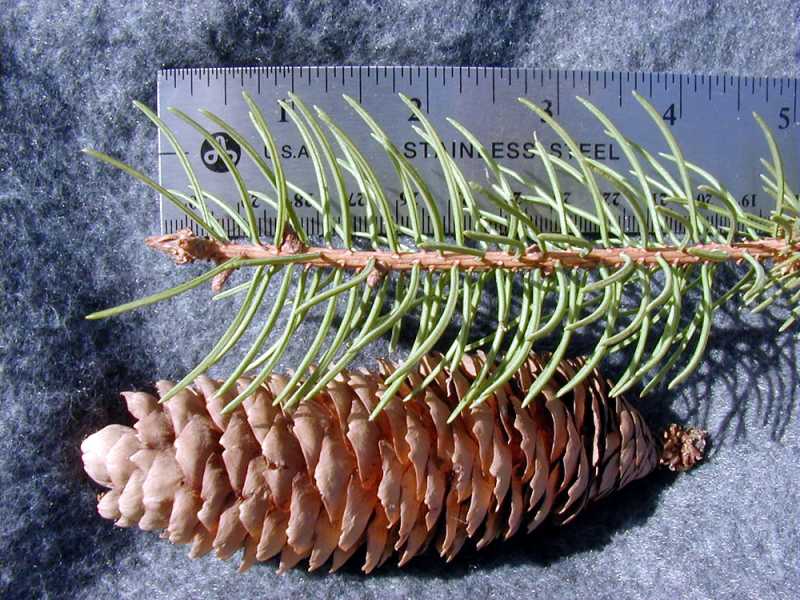
Norway spruce (Picea abies)
twigs and cone
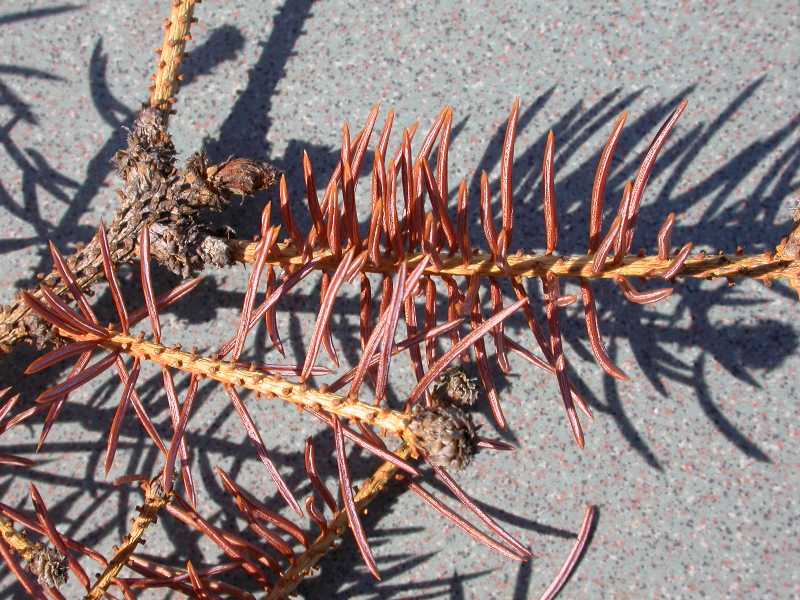
Pegs obvious
where needles have dropped off
|
Spruce identification
Needles are short, stiff, and sharp. They are attached singly to twigs on a woody, peg-like stalk that is easily seen where needles have fallen off (bottom image). Needles can be rolled between the forefinger and thumb, and in some species, needles have four edges that can be felt when the needle is rolled. Buds are dry and papery.
Spruces (Picea) are sometimes confused with pines (Pinus) or firs (Abies). Pines can easily be distinguished from spruces and firs, because pine needles are attached to twigs in bundles of 2, 3 or 5, whereas spruce and fir needles are attached one at a time. Spruces and firs look similar, but any of three differences will distinguish between them: 1) Fir needles are flat and cannot be rolled between finger and thumb as spruce needles can. 2) When fir needles drop from a twig, they do not leave behind a woody peg as spruces do. 3) The buds of firs are resinous, whereas the buds of spruces are dry and papery. |
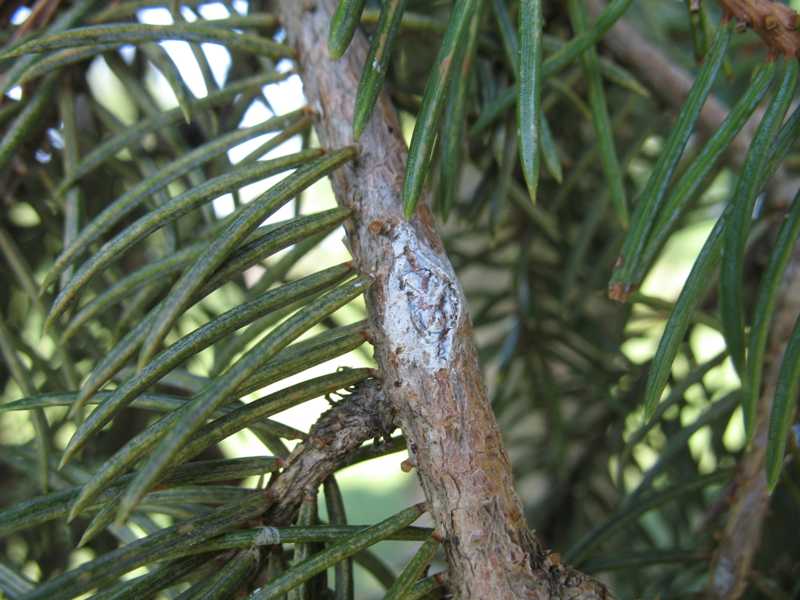 |
Cytospora canker
This fungal disease affects stressed trees and/or trees over 15 years old. Lower branches die. Needles turn brown and drop. On close examination of inner branches near the trunk, white patches of dried resin are visible on the bark. The whole branch is killed when it is girdled by the fungus. Eventually, it will kill the tree. It is most common on Colorado blue spruce.
Lookalikes: Spruce spider mite |
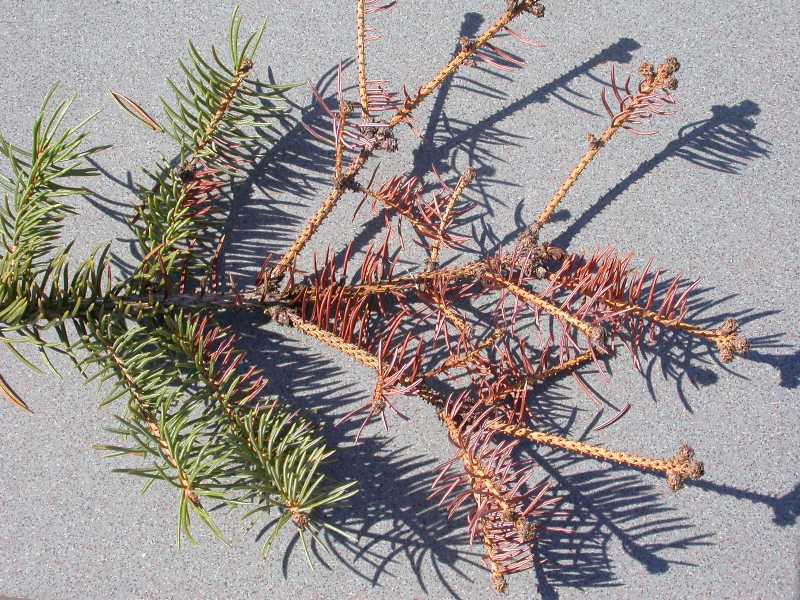 |
Rhizosphaera and stigmina needlecast of spruce
Both of these fungal diseases cause purpling, then death and dropping of second year and older spruce needles. Infection, which begins in spring, usually appears first scattered among the lower branches and may cause severe loss of needles. Fungal spores are spread by splashing water. The difference can only be determined by examination of the spores. Rarely does either disease kill the tree. Colorado spruce is the major host of rhizosphaera; Norway spruce is usually resistant. Stigmina affects all spruce. There is no chemical labeled for treatment of stigmina at this time. |
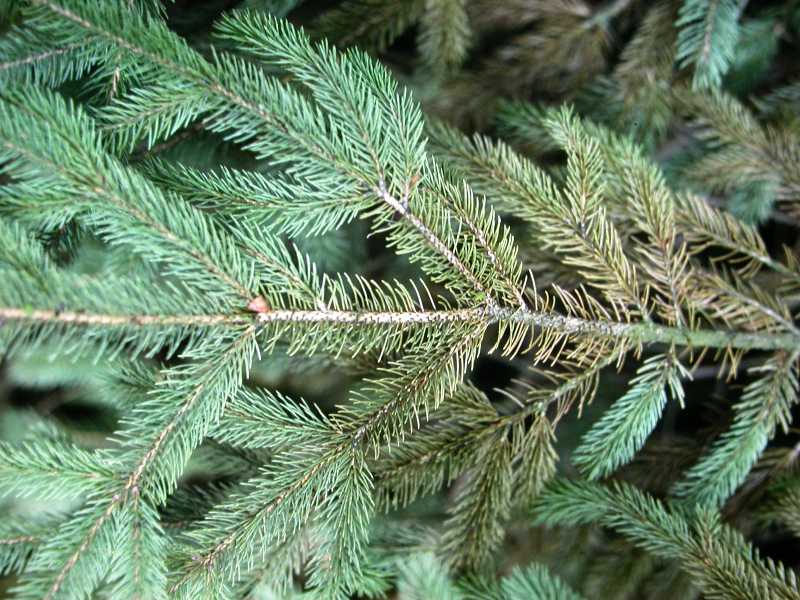 |
Spruce spider mites
This mite primarily feeds on older, inner needles, causing needles to look pale, yellow and sickly. The mites themselves may be green, pinkish or brownish-black and are tiny; the adults are only about 1/60th of an inch long. They produce fine webbing, especially at the base of the needles. Populations of the spruce spider mite are highest in the spring and fall, unlike many other spider mites that are more prevalent during hot summer weather.
Lookalikes: Cytospora canker, needle drop diseases |
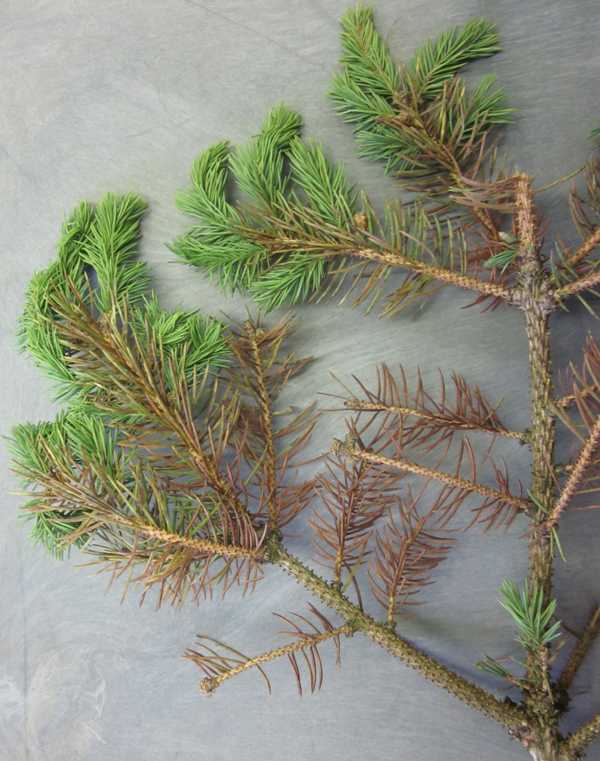
Diane Plewa
University of Illinois Plant Clinic
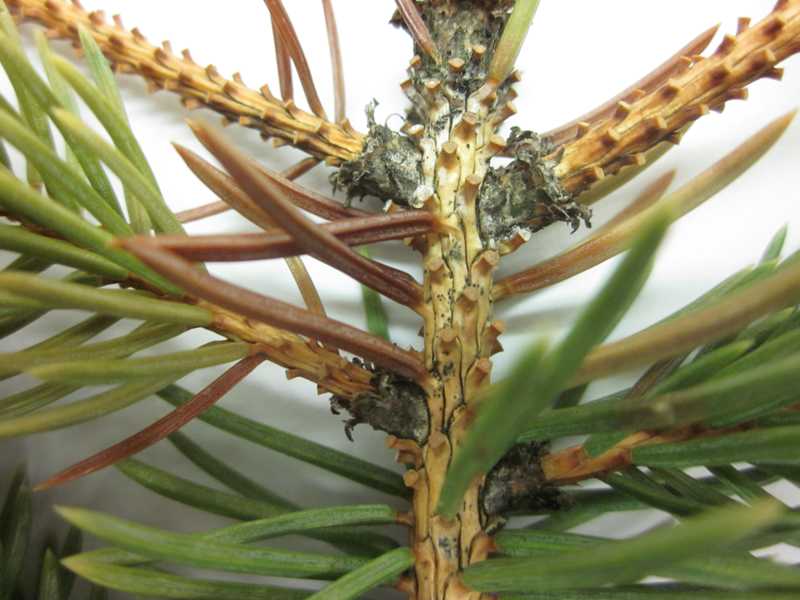
Diane Plewa
University of Illinois Plant Clinic |
Sudden needle drop of spruce (SNEED)
Sudden needle drop (SNEED) is a newly discovered needle drop disease of spruce found in both Missouri and Illinois. It is probably caused by the fungal pathogen Setomelanomma holmii. Symptoms are yellowing and eventual browning of older needles (top image). By autumn all needles on affected branches have dropped off except the needles on the tips of the branches. Affected branches may be scattered throughout the tree or include the entire tree. Tiny, black pimplelike fruiting bodies are on the twigs, not on the needles (bottom image). There is no chemical labeled for treatment of SNEED at this time.
Lookalikes: Spruce spider mites |
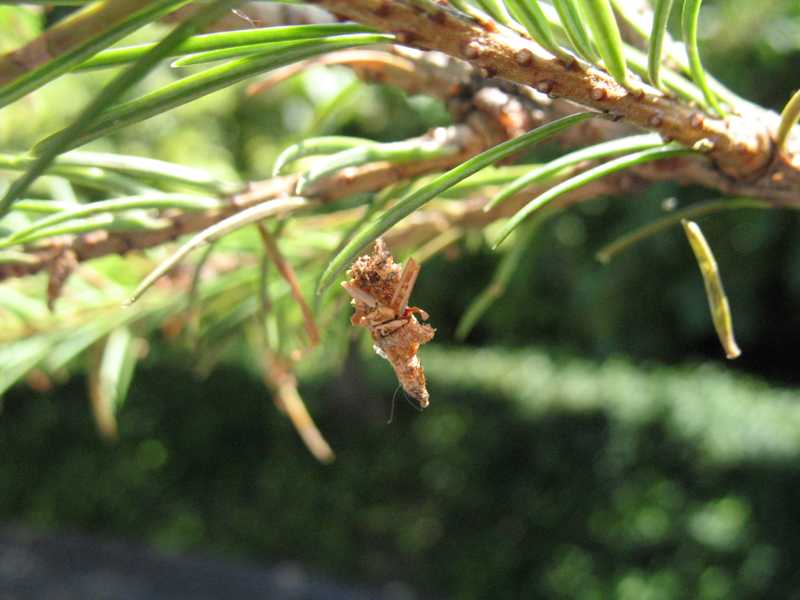 |
Bagworms
Bags are composed of silk and bits of chewed needles and are produced by the larvae (caterpillars) of a moth. The caterpillars feed on the foliage of spruce, other evergreens and many woody plants. Mature females attach their bag to a branch where they mate, lay eggs, then die, leaving a bag full of 500 to 1,000 eggs to overwinter.
Lookalikes: Spruce cones, Cooley and Eastern spruce gall adelgids |
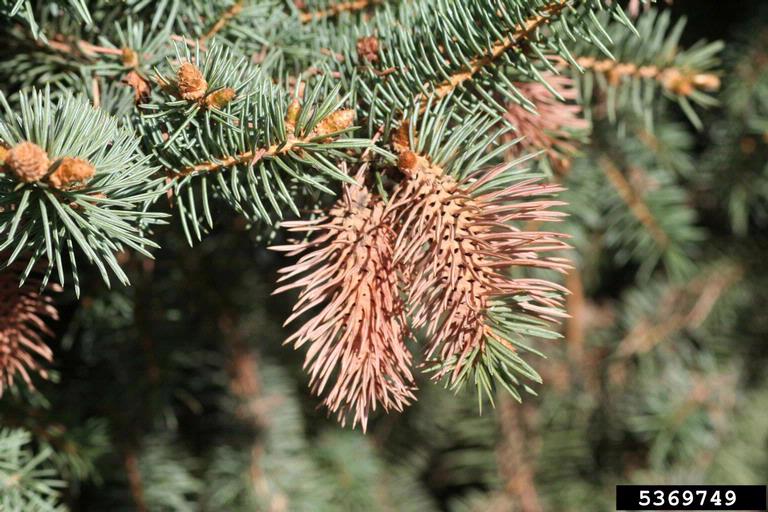
W. Cranshaw, CSU, Bugwood.org
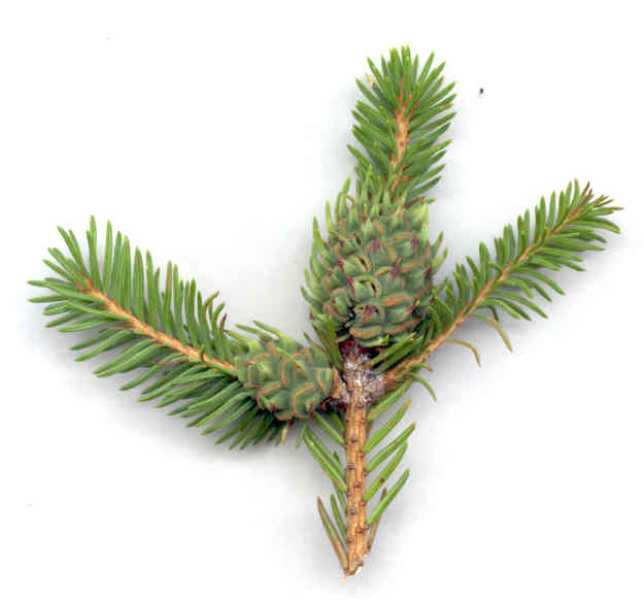 |
Cooley and Eastern spruce gall adelgids
Adelgids are insects, sometimes called woolly aphids, although they lack cornicles. The Cooley spruce gall adelgid (top image) causes cone-like structures on new growth shaped like a cucumber, while the galls caused by Eastern spruce gall adelgids (bottom image) resemble tiny pineapples. Adelgid feeding produces needle and shoot distortion and some yellowing.
Lookalikes: Spruce cones, bagworms |
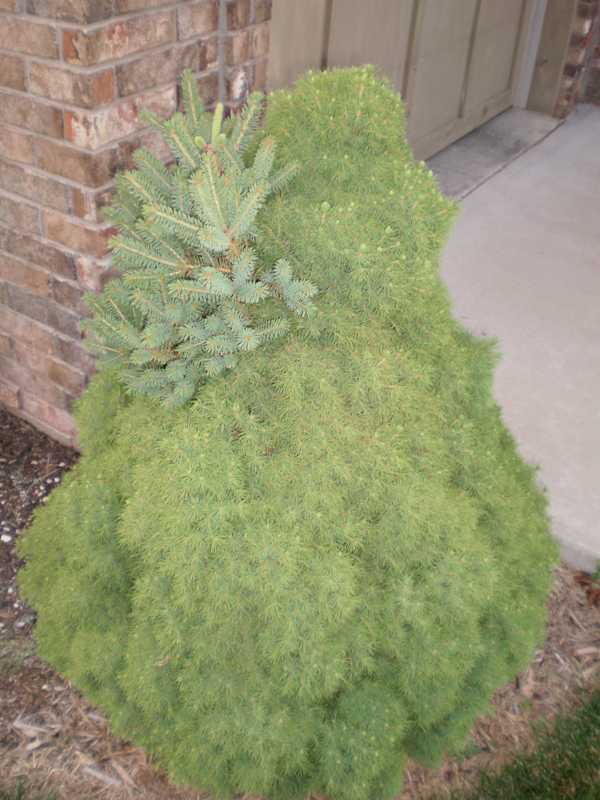 |
Cultivar reversion
Dwarf or variegated cultivars of conifers are often propagated from sports (mutations). These usually come from a single branch on a parent plant that has desirable characteristics vastly different from the parent plant. Such cultivars are often prone to "reversion", meaning that part or all of the plant reverts to the form of the parent plant. Dwarf Alberta spruce (Picea glauca 'Conica') is an example. Quite often a branch or section of a dwarf Alberta spruce (pictured at left) will sprout that has the characteristics of the non-dwarf parent plant (white spruce, Picea glauca), which under perfect conditions could reach 40 to 60 feet. If left on the plant, such reversions will take over, so should be pruned out as soon as possible. Sometimes reversions can be triggered by stress. |
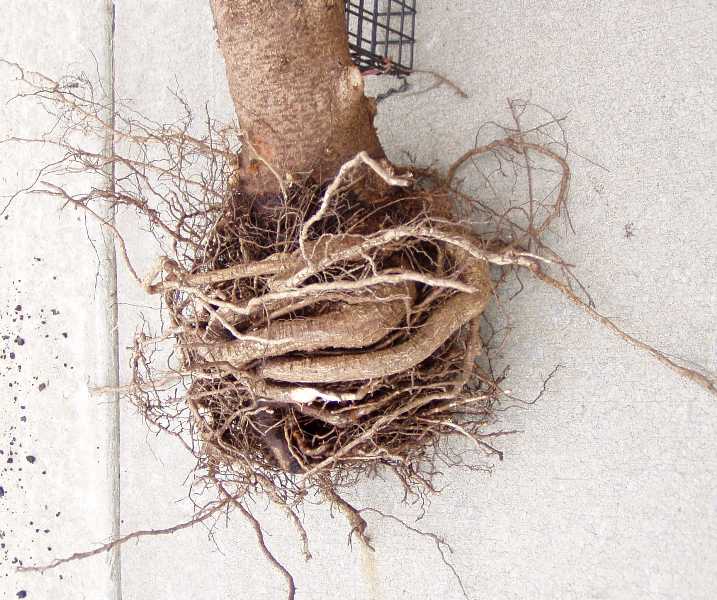 |
Environmental stress
Norway spruce (Picea abies), and its cultivars grow well in the Saint Louis area if planted and maintained properly. However, other species, such as, the popular Colorado blue spruce (Picea pungens), often do poorly in the Saint Louis area due to weather and soil conditions typical in the area. They dislike hot, humid summer nights and heavy, poorly drained, alkaline soils. They prefer cool climates and rich, moist, well-drained acidic soils.
Plants suffering from severe site stress may be more prone to the problems of spruce listed above, especially cytospora canker and spruce spider mites. Site stress or improper planting can also lead to girdling roots like those on the dwarf Alberta spruce pictured on the left. |
| |
Last updated: 1/2012 View a pdf of this guide |